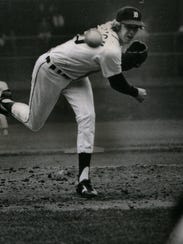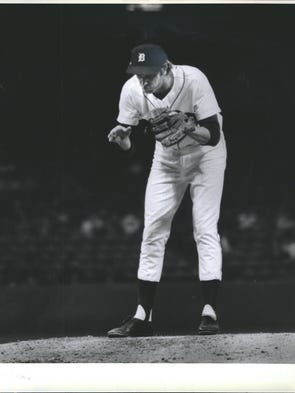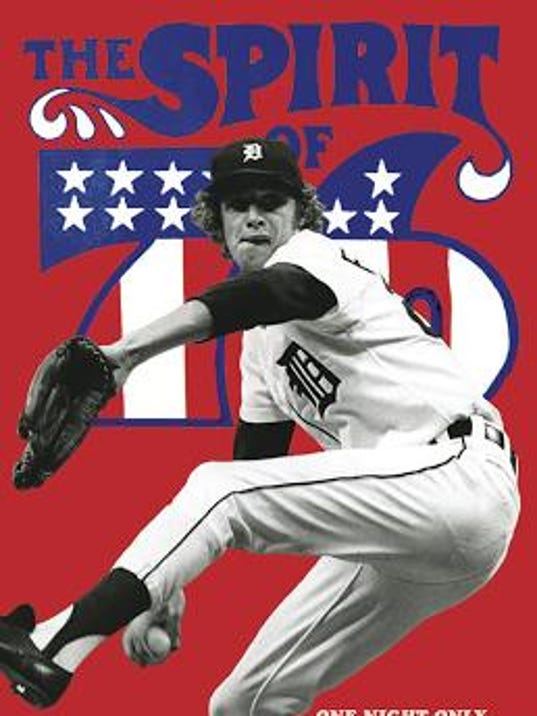Windsor: Magic of Fidrych lives on in ’76 replay
 Tuesday, June 28, 2016 at 10:00AM
Tuesday, June 28, 2016 at 10:00AM He had one great season, and still, here we are, 40 years later, talking about Mark Fidrych.
Watching him, too.
Some 90 people gathered at Cinema Detroit on Tuesday night to celebrate the enduring legacy of the former Tigers pitcher. The theater, along with the Navin Field Grounds Crew, showed a replay of Fidrych’s outing against the Yankees on June 28, 1976.
Back then we called it Monday Night Baseball, and the platform helped introduce Fidrych to the nation. What it saw was an uncommonly unique performer, nicknanmed “The Bird,” — named after Sesame Street’s Big Bird — and all his eccentric in-game antics.
The grooming of the mound. The chats he held with the ball. The aiming of the ball.
He was different. Didn’t follow the flow of the game as much as he made it his own.
He mowed down the Yankees that June night. Went on to win rookie of the year. And then … he was gone. That incarnation, anyway, felled by injury and a condition known as a dead arm. He never was the same after that summer of 1976.

Rookie of the year Mark Fidrych was 19-9 with a 2.34 ERA in 1976. (Photo: Detroit Free Press)
That his legacy endures after one successful season tells us a lot about the pitcher. But it tells us more about us, about what we value in our athletes, about what sticks in our memory.
Fidrych didn’t bring the Tigers a division championship. Or a World Series. Or even the scent of a playoff race. In fact, the team lost more than it won that season.
And yet?
There were his fans, packed into a theater on Third Street near the Midtown section of Detroit, listening to tales of the pitcher and watching a replay of that game at Tiger Stadium. Some wore Fidrych jerseys. Other carried Fidrych gloves. Still others passed around Fidrych posters and baseball cards.
They were here to swap stories, to keep his legacy going. They also were here because he transcended baseball, at least for them.
“He was true to himself,” said Karen Kozy, a Detroiter who designed the Fidrych poster tacked up in theater’s lobby. “He didn’t succumb.”
To the system. To the man. To the decorum of the game.
“He rooted around in the dirt and talked to the ball,” she said.
And he smiled. Spread joy without trying.
“An original,” said Dave Mesrey, a co-founder of the Navin Field Grounds Crew.
Figuring out what is authentic these days is no easy thing. We live in a world of knockoffs, of the ubiquitous sales pitch, of a relentless push to the middle.
Fidrych operated on the margin of what was expected. He carried himself like you or I might were we to possess a 90-m.p.h. fastball and a slider that darted and flashed like lightning. His outings became a kind of performance art, and wherever he went fans flocked.
As historian, Bill Dow said in a recent profile for the Free Press, Tiger Stadium averaged about 18,000 fans a game in 1976. Except when Fidrych pitched, and more than 33,000 showed up.
“He was more than a baseball player,” Mesrey said.
How else do we account for a theater of patrons to watch a 40-year-old game?
We don’t. It was all Fidrych. An athlete whose fire burned hot for a short time a long time ago, but whose embers still crackle.

































Reader Comments